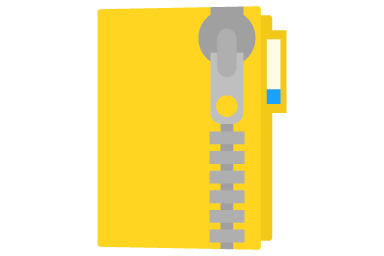Examples
This page and its subpages show some examples using the pMuTT code. There are several formats available.
To run examples on Binder, simply click the logo and wait for the session to be initialized.
To run examples on HTML, Jupyter, or Python, it is recommended to download the ZIP folder. This will contain other files (like spreadsheets) that may be required for the code to run.
If a link leads to a page of text, right-click any empty space on that page and choose “Save Page As”. It will download to your computer in the appropriate format.
The pros and cons of each format are listed below.
Criteria |
Binder |
HTML |
Jupyter |
Python |
|---|---|---|---|---|
File in ZIP Folder |
N |
Y |
Y |
Y |
pMuTT installation req. |
N |
N |
Y |
Y |
Jupyter installation req. |
N |
N |
Y |
N |
Other files (e.g. spreadsheets) req. |
N |
N |
Y |
Y |
Non-code elements easy to read |
Y |
Y |
Y |
N |
Code elements easily editable |
Y |
N |
Y |
Y |
Overview





Topics Covered
Using constants and converting units using the
constantsmoduleInitializing
StatMechobjects by specifying all modes and by using PresetsInitializing empirical objects such as
Nasaobjects using aStatMechobject or from a previously generated Nasa polynomialInitializing
ReferenceandReferencesobjects to adjust DFT’s reference to more traditional referencesInput (via Excel) and output
Nasapolynomials to thermdat formatInitializing
Reactionobjects from strings
Experimental to Empirical





Topics Covered
Using pmutt’s constants for unit conversions
Create a
Shomateobject from experimental dataCalculate thermodynamic properties using the
ShomateobjectPlot the shape of the
ShomatecurveSave the
Shomateobject as a JSON file
Excel to Empirical Data





Topics Covered
Reading ab-initio data from an Excel file
Initialize
Referenceobjects and aReferencesobjectWrite
Nasaobject to athermdatfile
Reaction





Topics Covered
Read a thermdat file and convert it to a dictionary of Nasa objects
Initialize a
Reactionobject manually and from stringsAdd a BEP relationship to a
ReactionobjectCalculate thermodynamic and kinetic properties using the
ReactionobjectSave the
Reactionobject as aJSONfile
Chemkin_IO





Topics Covered
Read species ab-initio data, reactions, and catalyst sites from a spreadsheet
Write the thermdat, gas.inp, surf.inp, T_flow.inp, EAg.inp, EAs.inp, tube_mole.inp files
OpenMKM_IO





Topics Covered
Read species ab-initio data, reactions, lateral interactions and phases from a spreadsheet
Write the CTI input file
Phase Diagram





Topics Covered
Initialize
Reactionobjects to describe the formation reaction of FeOx speciesGenerate a 1D phase diagram by varying T
Generate a 2D phase diagram by varying T and P
Save the
PhaseDiagramobject as aJSONfile
Workshops
NAM26 Workshop





Topics Covered
Using constants and converting units using the
constantsmoduleInitializing
StatMechobjects by specifying all modes and by using PresetsInitializing empirical objects such as
Nasaobjects using aStatMechobject or directly using the polynomialInput (via Excel) and output
Nasapolynomials to thermdat formatInitializing
Reactionobjects from strings
AIChE 2019 Workshop




